Writing a Listicle in 5 Steps
Titles with numbers have always been effective at grabbing attention, with listicles being chief among them. Listicles break broad topics into bite-sized chunks. They make great social media content and work well for SEO, attracting backlinks from sites that share your well-researched content and those seeking features in your high-quality listicles.
But since content creators and marketers are also aware of how useful listicles are, they have become a double-edged sword. Listicles are overused because they are easy to get clicks for. This has driven down their quality as a content type. Plus, Google and other AI engines are turning information into listicles, driving down this format’s hype even further.
However, when done properly and optimized well, they do still work. Google AI Overviews (and other AI-powered engines) can cite your listicles and send traffic your way.
Let’s look at how listicles (when used in moderation) can be effective for content marketing.
A listicle is an article written in list format, commonly used when sharing expert tips or creating step-by-step guides, industry best practices, and resource roundups.
Listicles are effective for content marketing when they curate the most relevant information, stand out in SERPs, are easy to scan, and are optimized for citation by AI search engines.
When making listicles, decide on a topic and its keywords, list each item logically and describe them, and add plenty of eye-catching images.
Use SE Ranking’s Keyword Research and Competitive Research tools to find low-competition keywords with high traffic potential and get inspiration for keyword ideas for your listicles.
Use an AI-powered Content Marketing tool to automate listicle-writing.
Make your listicle blog post shine even more by incorporating influencers, using filters and anchor links, splitting your listicle into sub-topics, using infographics, including the number in the title and header, and prioritizing quality above all else.
What is a listicle?
What is the definition of a listicle? It’s simple!
Article + list = listicle!
In other words, a listicle is an article written in list format. Among many types of listicles, the most common include expert tips, step-by-step guides, industry best practices, and resource/product roundups. For example, “Top 10 SEO Tools” or “15 Ways to Improve Your Content Marketing”, etc. Many listicles come packed with interactive elements, making them more useful, easy on the eyes, and engaging to readers. We’ll share advanced tips for creating listicles like these later in this article.
Listicle examples
Listicles come in infinite topics and varieties. Let’s look at some listicle examples from different industries.
- Glamour published a roundup of the 60 best drinks to order from Starbucks’ secret menu in 2024.
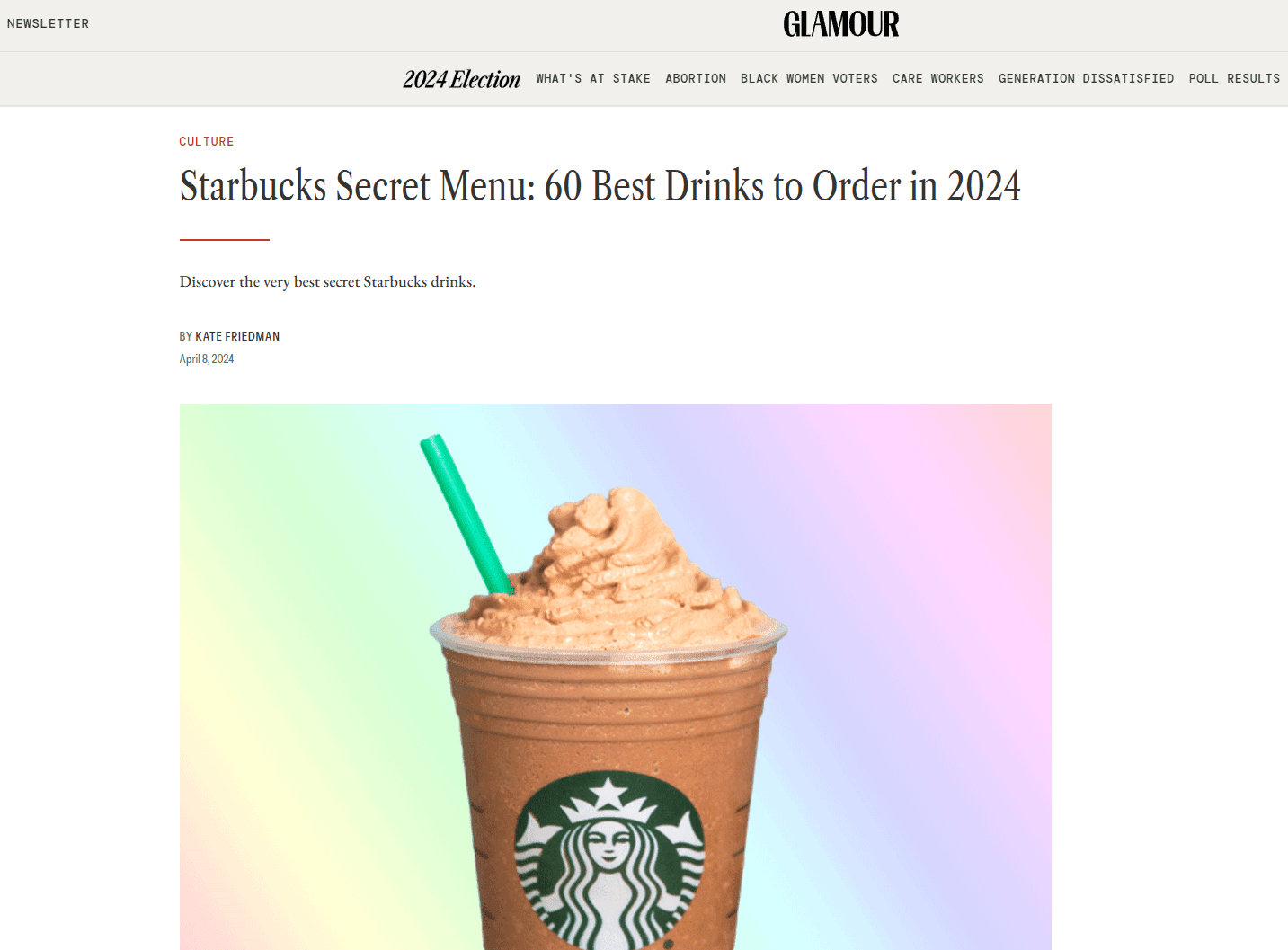
- Architectural digest gives you 39 wall decor ideas.
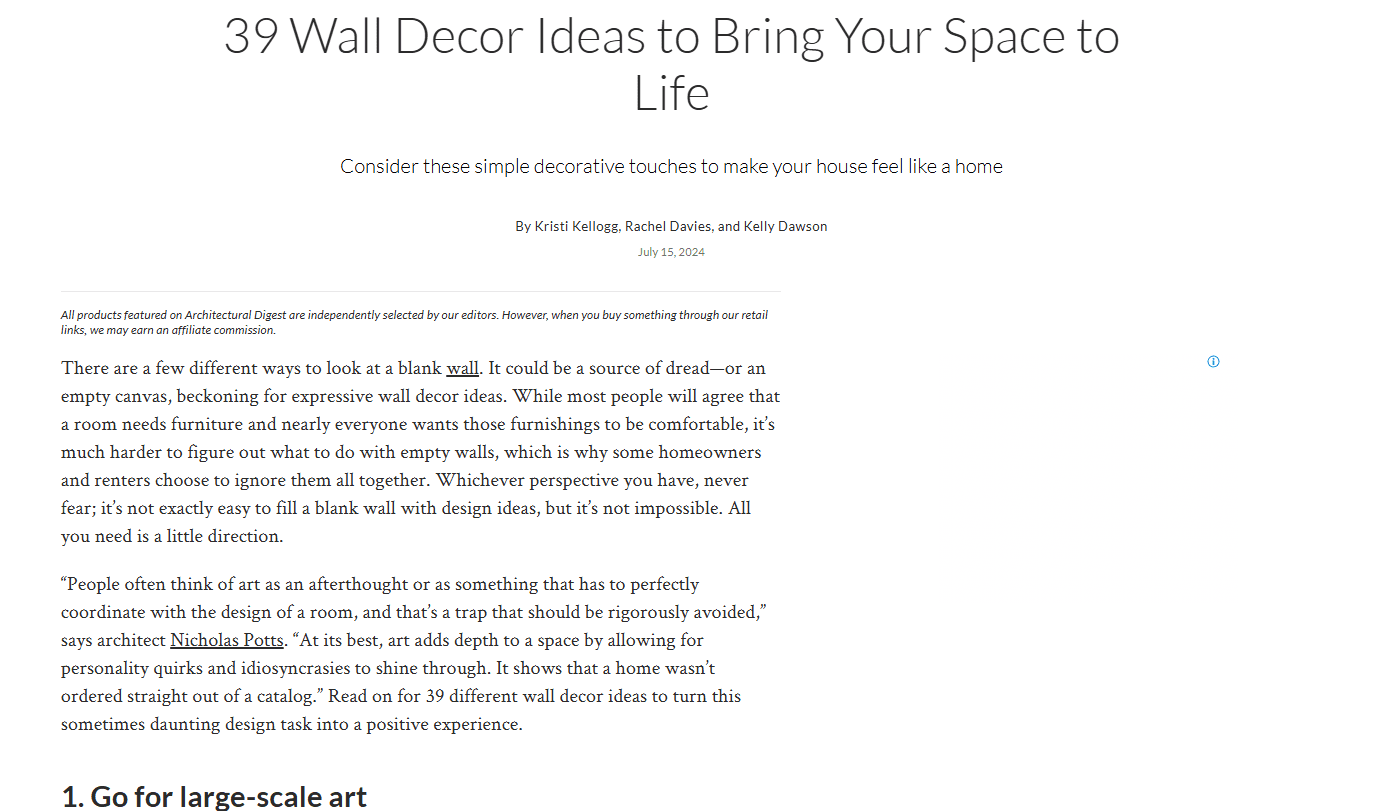
- HubSpot offers 30 brilliant marketing email campaign examples.
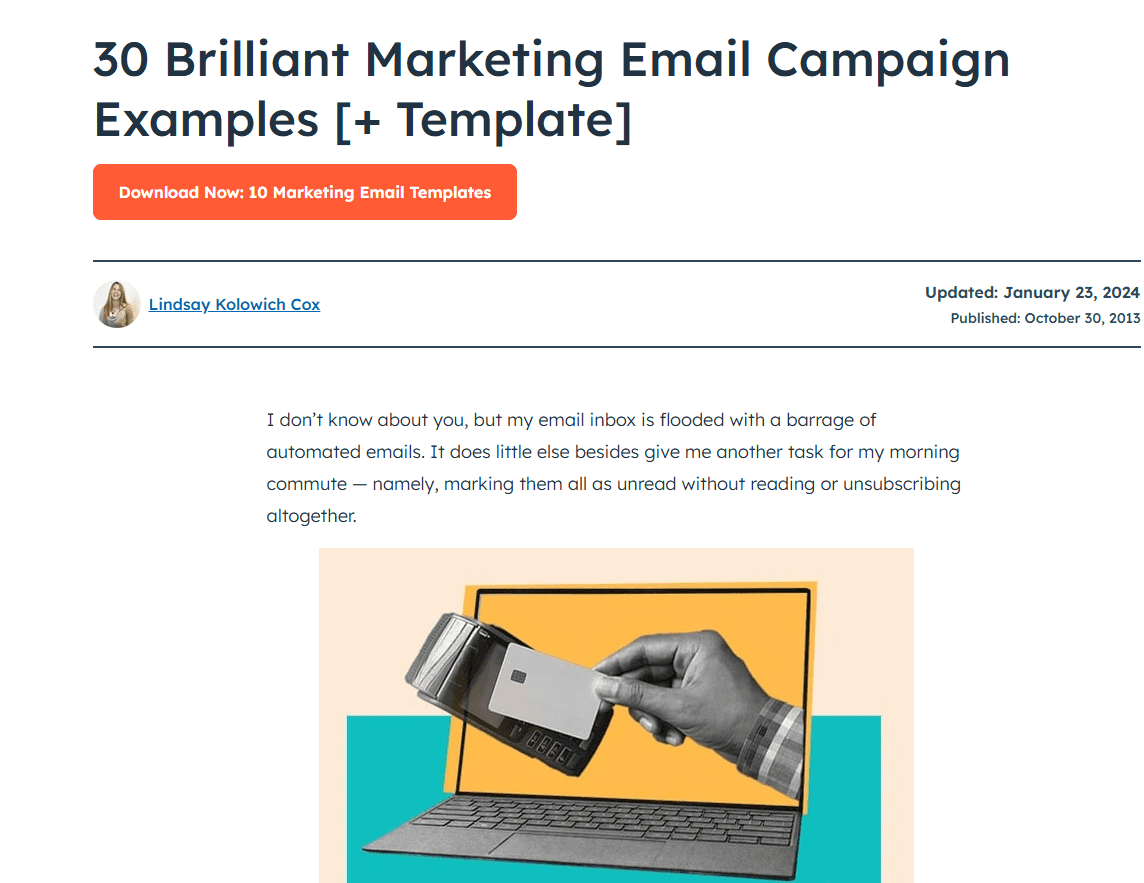
- SE Ranking invites you to take a deep dive into a comprehensive list of the 70 best digital marketing tools.
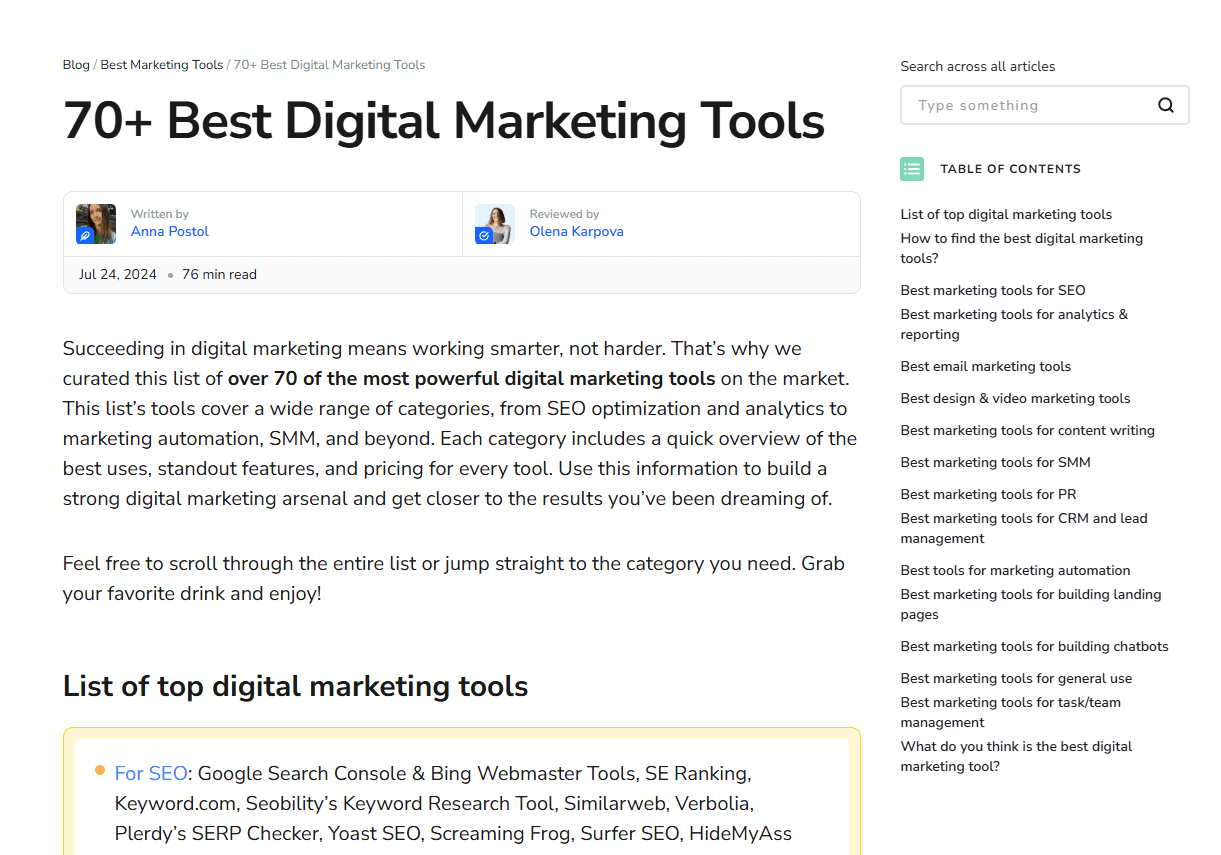
Why are listicles so popular?
Here are just a few of the many reasons why listicles are so popular.
1. They stand out in Google SERPs
In a sea of text, what’s likely to catch a reader’s eye? Something that isn’t text, meaning numbers. When a reader spots a listicle in the search engine results, they’re immediately drawn to it because the title stands out.
2. They’re easy to scan
There’s plenty of data to suggest that users typically don’t sit down and read content word for word. For example, one study found that 35% of readers tend to skim through blogs most of the time, while 38% combine skimming with deeper reading.
The takeaway? Don’t assume people are digesting every last thing you say, because they probably aren’t.
If you want people to stay on the page longer, make it easier for them to skim it. By nature, lists create more white space on the page, which makes it easier on the eyes and smoother to read. Consider, as an opposite example, an article that’s one giant paragraph of non-stop text. Would you enjoy reading that? Would you even bother? Probably not. Listicles help you avoid this type of issue.
Listicles are uniquely reader-friendly because you can easily skim them and walk away with the main points.
3. Listicles curate the most important information
The numbered points of a listicle usually represent the most important information in the article. If you want to give your readers something quick to digest with only need-to-know information, listicles are the way to go.
Instead of sifting through Google SERPs to find the most important information, readers can get it in a flash with a listicle.
Moreover, as we mentioned earlier, Google, Microsoft Copilot, Perplexity, and other AI search engines use the listicle format to provide quick and useful answers across AI-generated responses. So, putting more effort into high-quality listicles optimized for AI is a promising strategy because it gives you more chances to get cited by AI search engines.
Content is crucial for your SEO success. Enroll in our Content SEO Course to master the creation of listicles and other types of content to get better SEO results.
How to write a listicle
Now that you know what listicles are, why they’re so effective, and what they look like, it’s time to create one. But before you get started, consider these five simple tips.
1. Choose a content topic that makes sense in list format
Not everything belongs in a simple list format. For example, if you’re writing an article on the history of Google, you’re telling a story. Stories shouldn’t be broken down into list articles.
At the same time, if your topic is best winter holiday destinations, the intent behind it begs for a listicle. One easy way to find topics suitable for listicle format is to pay attention to the main keyword.
We’ll discuss why keyword research is essential for your listicle success in the next section.
Here’s a list of keyword types that normally make for a great listicle:
- Keywords with modifiers such as best, top, new, free (e.g. best cms for small businesses).
- [Product name] + alternatives (e.g. Hubspot alternatives).
- The plural form of the keyword (e.g. winter hand creams, Christmas movies).
- Types of/examples of + [plural keyword] (e.g. types of rose bushes).
- [Plural keyword] with [*] (e.g. dog houses with heaters).
- [Plural keyword] that are [*] (e.g. ovens that are also microwaves).
- [Plural keyword] + [year] (e.g. books 2024).
Some keywords can fall into one of these categories and still make for a poor listicle topic. Avoid this by reviewing the SERP triggered by each keyword and seeing if your search intent matches the results. For example, if you google the plural keyword “garden chair covers,” you’ll see pages from ecommerce giants like Amazon and Coverstore.
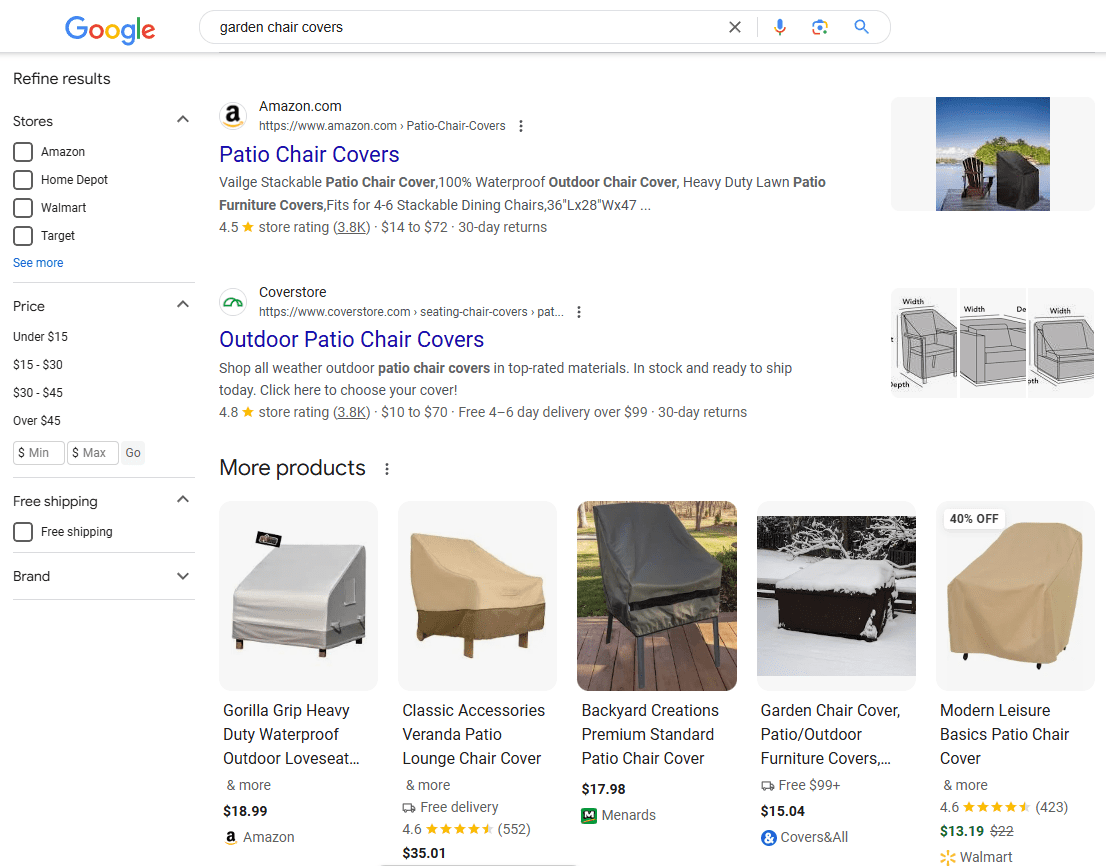
This is because the search intent of this keyword is transactional and not informational. Users will want to choose a suitable garden chair cover directly from their preferred e-сommerce store without reading a listicle.
It’s always a good idea to check the SERP before settling on a topic for your listicle. You can do this straight from Google or use special tools. For example, SE Ranking’s Keyword Research tool has a special SERP Overview tab where you can immediately see which pages are ranking high for your chosen keyword. More on this tool in the next section.
2. Find your keywords
If you want your target audience to find you on Google, make your list as visible as possible. This is where keywords come in. You should ideally use keywords that are higher in traffic and lower in competition. This means many people search for them, but few websites create content around them. These terms are easier to rank for.
Go to the Keyword Explorer, enter a seed keyword (a general keyword around your topic of interest), and pick your target location.
SE Ranking’s metrics, such as search volume and difficulty, help you find low-competitive keywords with high traffic potential.
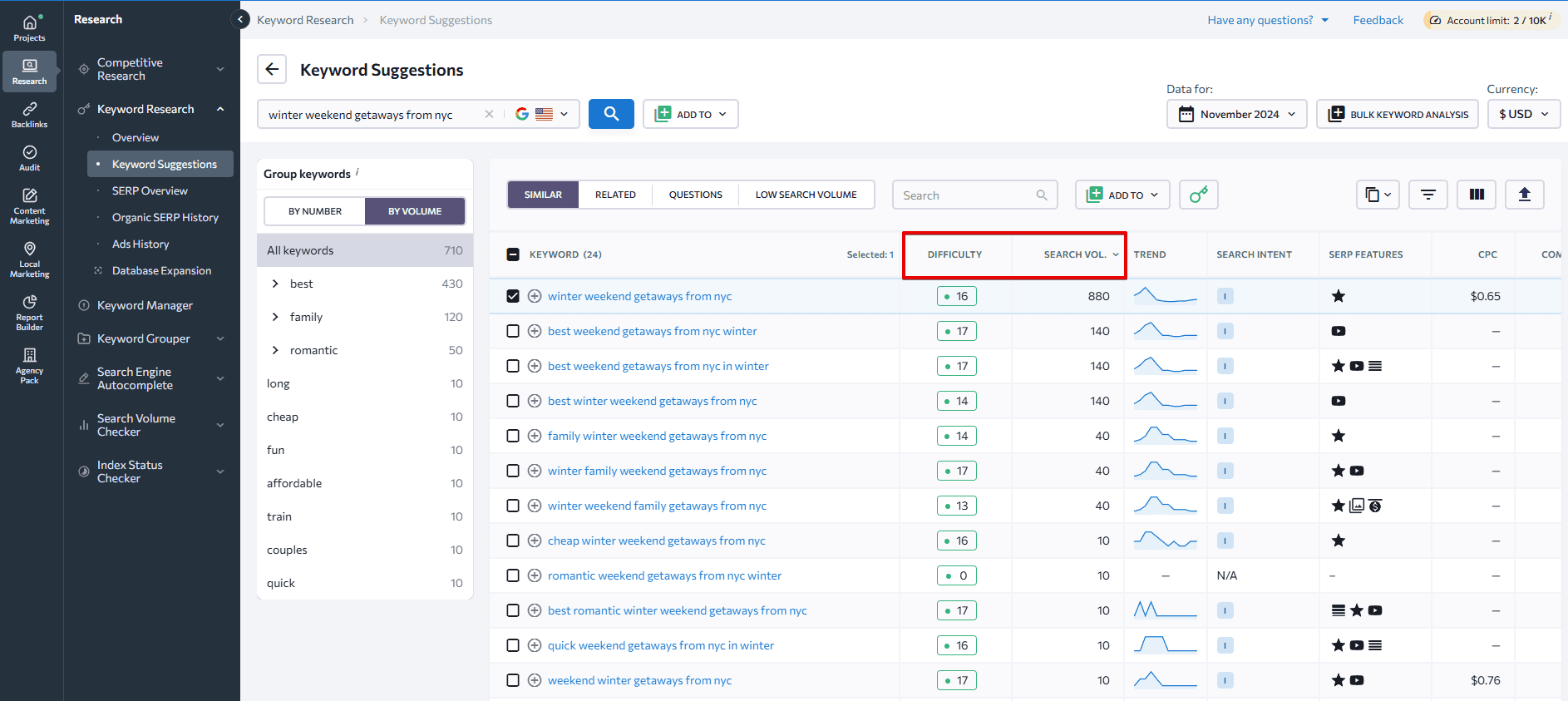
It also has a tab dedicated to low search volume keywords with clear intent. These can drive as much traffic as high-volume terms, so consider them as well.
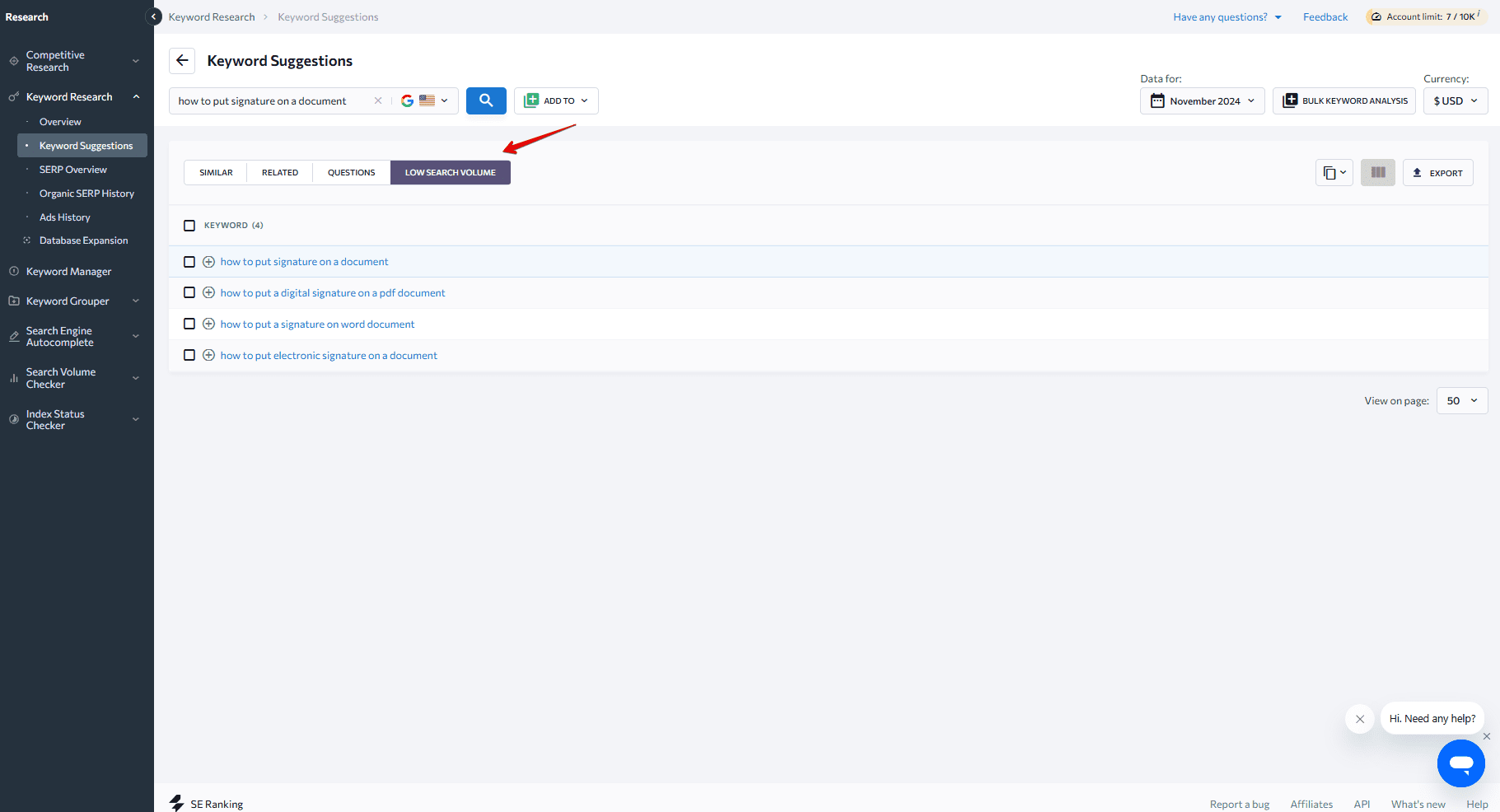
Pay attention to the SERP Overview section we mentioned earlier. It shows pages that are already ranking for the chosen keyword. If you notice listicles there, it is probably the right format for the topic.
If AI Overviews are a part of your SEO optimization strategy, filter your keywords by SERP features and pick AI Overviews to see which ones trigger them. Add them to your project.
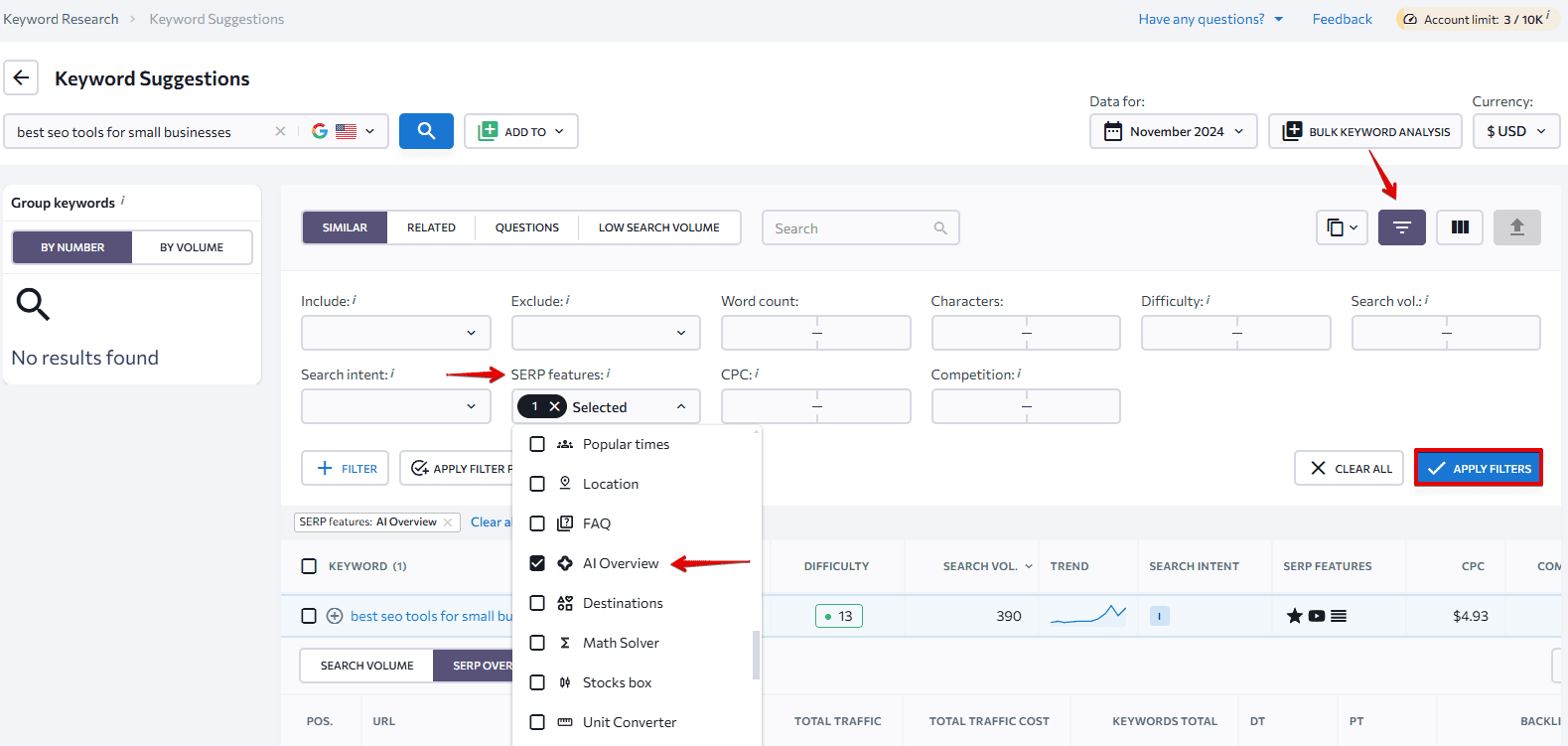
Another way to find keywords for your listicle is to analyze your competitors’ content. You can get a bird’s-eye view of your competitors’ keywords with SE Ranking’s Competitive Research Tool. Enter your competitor’s URL and go to Organic Traffic Research — Keywords. Use the keyword modifiers we discussed in the previous section to find the right keywords for your listicle.
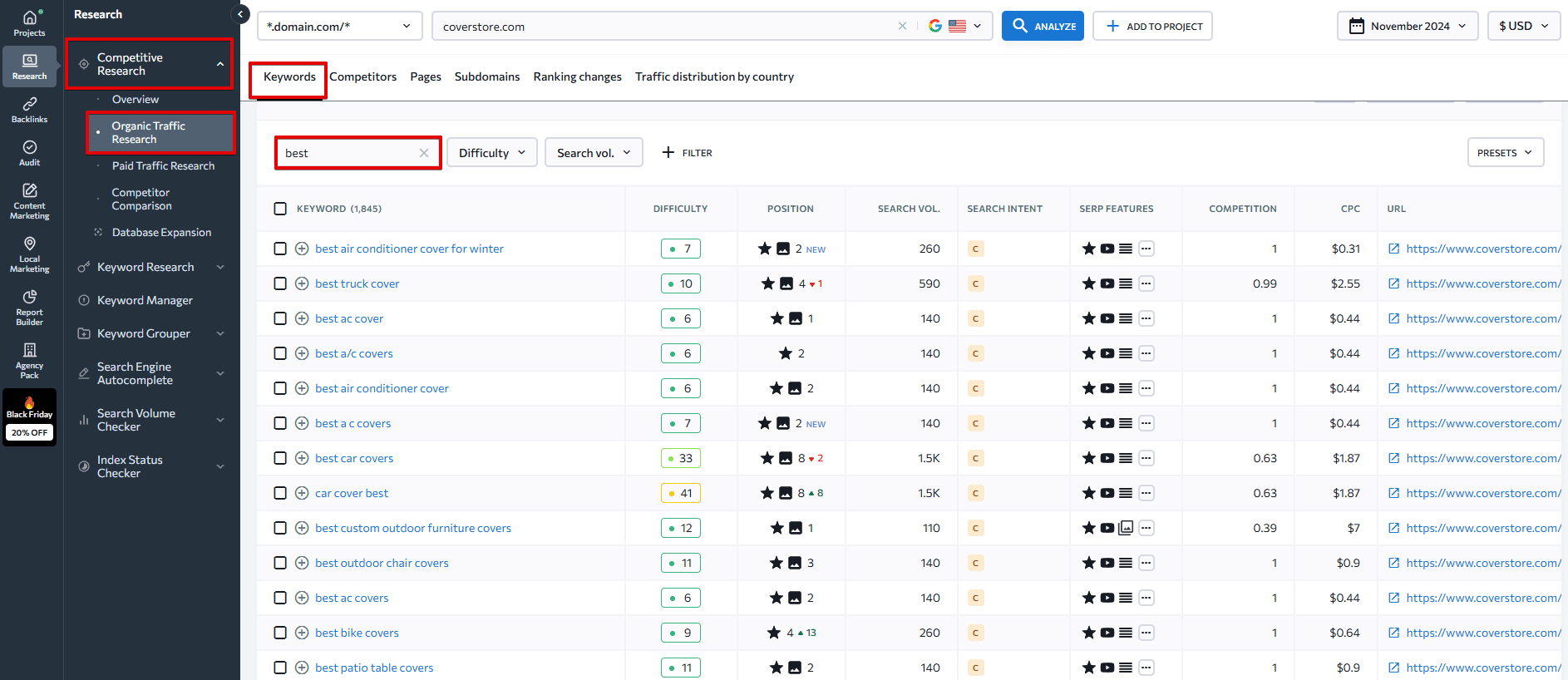
Finally, you can also use Google keyword trends to see what’s getting the lion’s share of search traffic lately. This is a great opportunity to take advantage of a topic/keyword that’s rising in popularity but isn’t saturated yet.
If you have a substantial number of promising keywords after researching different keyword opportunities, use the Keyword Grouper. It organizes similar keywords into clusters based on user intent. Using a dedicated tool to group keywords saves you time and reduces errors because you’re automating a process you would otherwise have to do manually.
If you are new to SEO, check out this complete keyword research guide. Play your cards right and your listicle will rise to the top of the SERPs.
3. Describe list items
You can go into as much detail as you want. Just remember to maintain one of the biggest benefits of listicles: “skimmability.” If you add several paragraphs of text to each item on your list, consider using additional headlines to keep the article as scannable as possible.
Also, remember to add internal links (to the same website) and external links (to other websites). Internal links keep people on your site longer, provide additional value, and can boost your SEO juice (aka link juice) with Google. External links, especially to credible sites, can help you build authority.
Consider contacting the external sites you link to and telling them about their role in your listicle. They may be inspired to share your content.
4. Make sure the order of the list is logical
Your listicle should make the readers’ lives easier by condensing that topic’s most important information into an easy-to-read article. You can accomplish this by ordering your list in an intuitive and reader-friendly way. Users will leave the page if they have to skip around.
5. Bonus: Support your list post with imagery and examples
Readers are led by intrigue. One survey found that 42% of buyers prefer interactive multimedia content to static, text-based content. This includes images, GIFs, social media embeds, YouTube video embeds, infographics (more on those in a minute), or even unique graphic designs.
Remember the Starbucks roundup we mentioned earlier? The author in that article included Instagram embeds on images of mouth-watering drinks. This brought the listicle to life, giving the reader examples of what they’re reading about, and kept them on the page longer.
Automate the listicle-writing process
Wouldn’t it be nice to know exactly how many details you need to add when describing list items? Or how about knowing the right number of images to include in your listicle post? You also want to know for certain you’ve included all relevant keywords in the text.
Modern content tools can do just that. The heaps of tips they offer help you write a listicle faster while pushing you closer to the top of the SERP. SE Ranking’s new Content Marketing tool analyzes the SERP leaders to give you recommendations on the word count and the number of headers, paragraphs, images, questions to address, and more. It also offers plenty of relevant terms (including NLP terms) to add to your copy, ensuring Google finds the text relevant to the user intent.
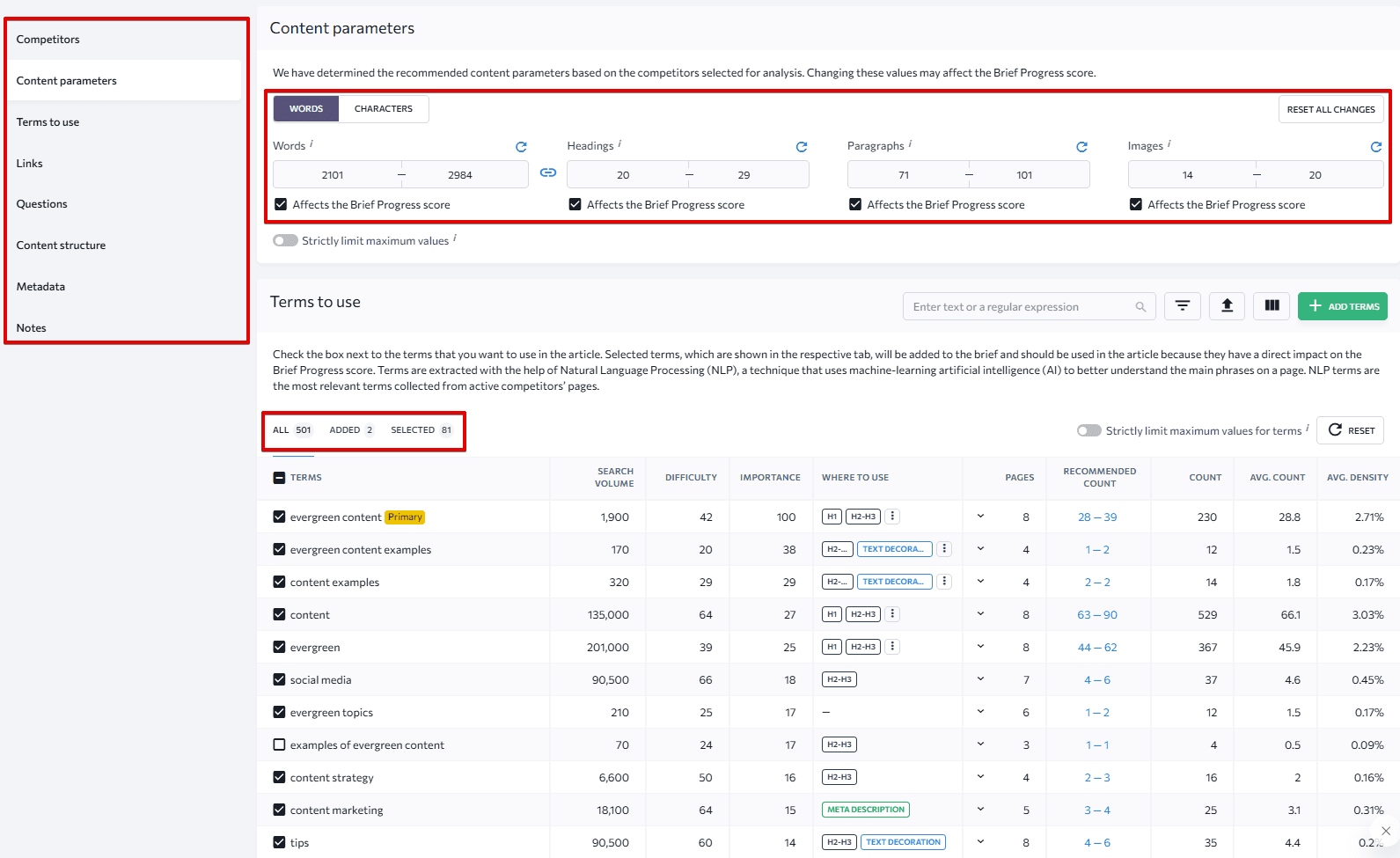
You can also use it to analyze the headings of top-ranking texts side by side. Based on what you see, you can add them as a reference to your outline using the simple drag-and-drop editor.
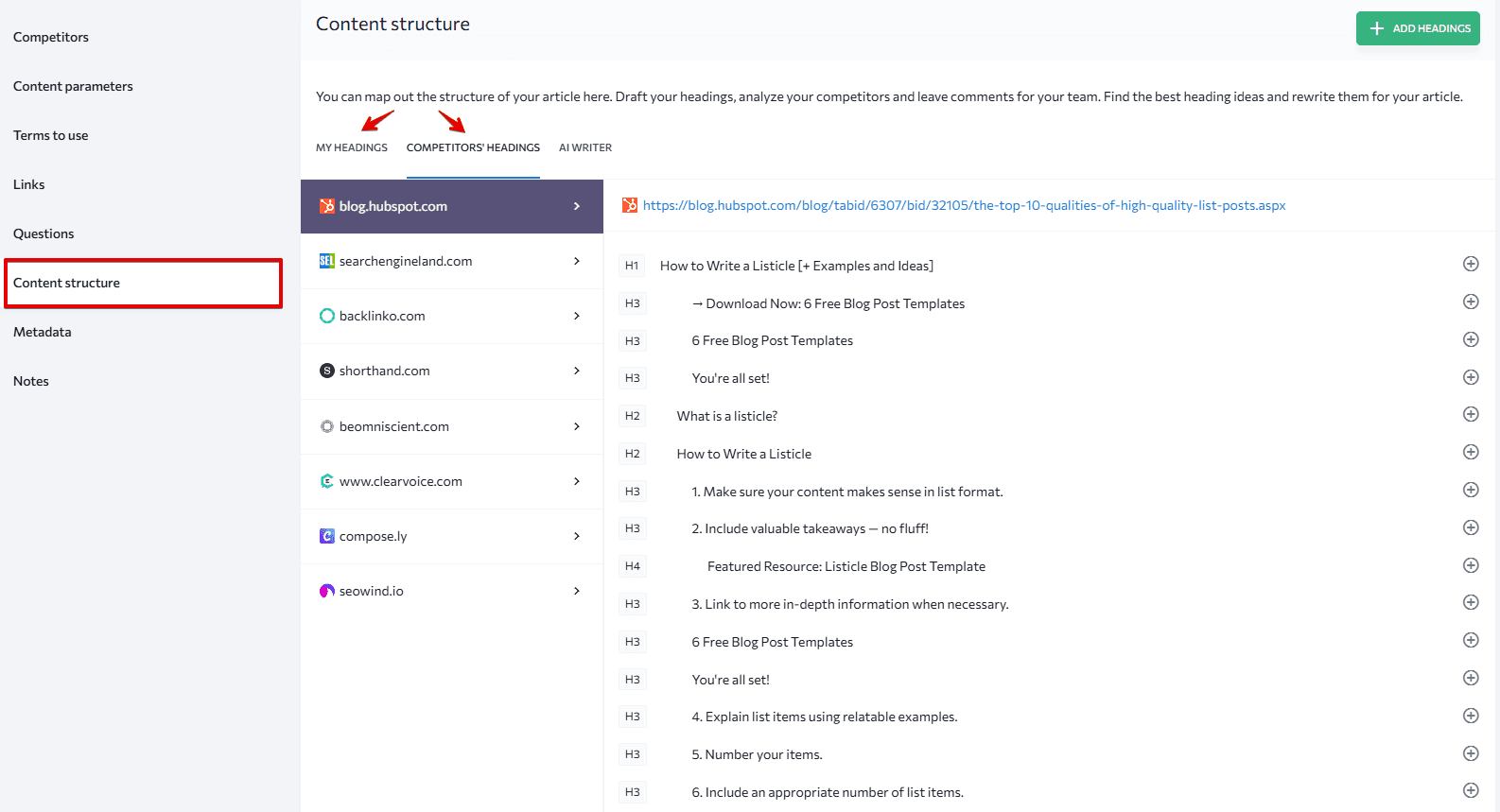
You might have also noticed on the screenshot that there is one additional AI Writer tab. This tab allows you to use AI to generate high-quality, valuable headings with less effort.
The tool’s AI features can generate everything your content structure needs, from topic ideas to meta tags. You either guide the AI by creating step-by-step rules for it to follow when creating your content or give the AI full creative freedom over your article. However, remember to maintain text quality by adding your expertise, unique perspectives, and fact-checking all AI-generated content. Otherwise, you won’t stand out on Google or other search engines.
Finally, the tool helps you optimize written text. It will check if you included all selected terms and suggest which to add in headings and body text. It will also suggest what to format in bold, italics, and more to improve your text’s quality and visual perception. It checks if the word count is as recommended and whether the text is easy to read, unique, or error-free.
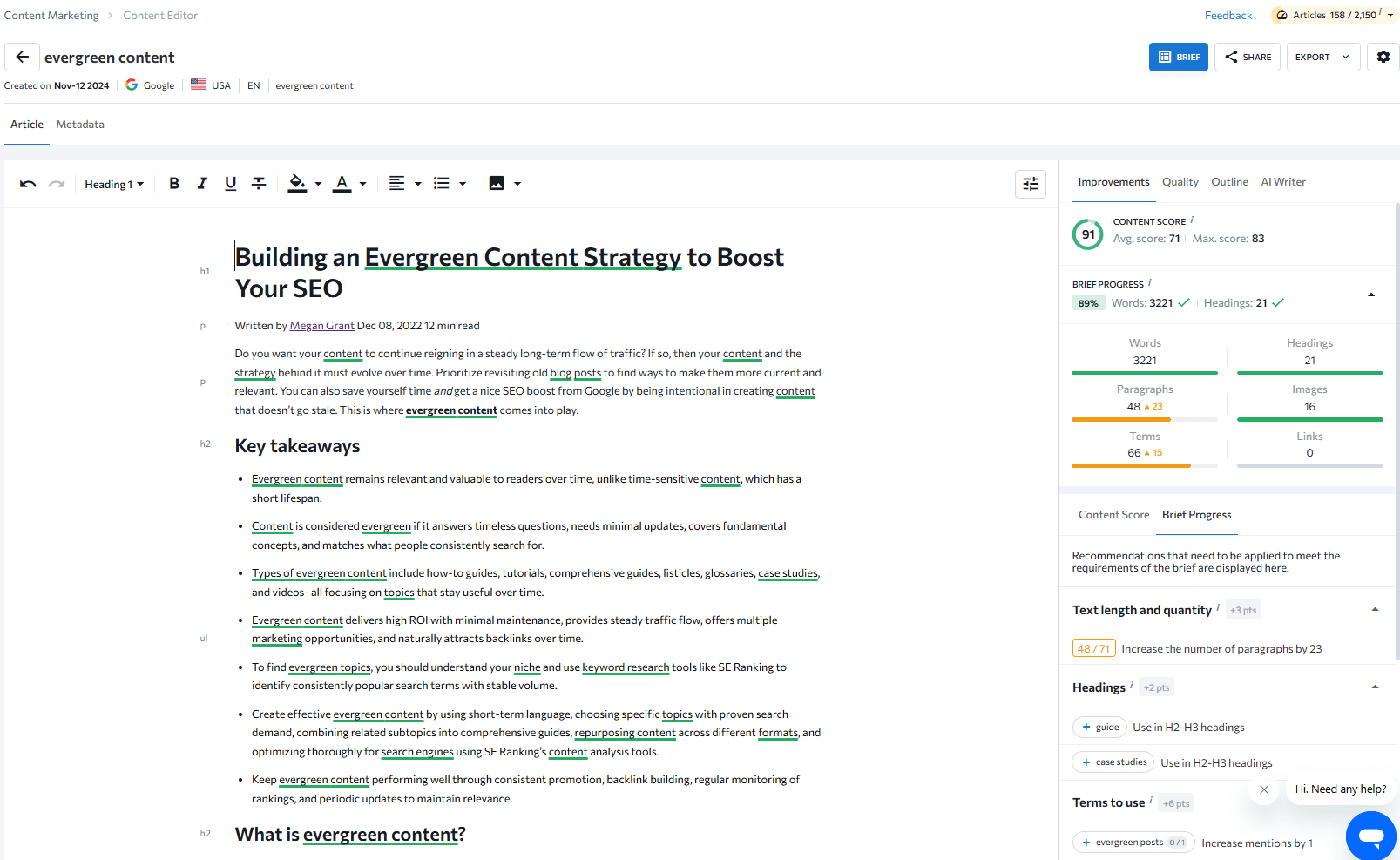
The Content Marketing tool is available for free as part of SE Ranking’s 14-day trial of the platform.
6 advanced tips for writing effective listicles
Now that we’ve got the basics down, let’s move on to pro tips for listicle-writing.
1. Incorporate influencers for credibility
Influencer marketing is skyrocketing for a reason. That’s because influencers have a tremendous amount of influence! Listicles are a great opportunity to weave in relevant influencers with a big reach. For example, if you’re doing an excellent list of the best dog breeds to own, you could include famous pooches like Noodle, Norbert, and Tuna.
Once your listicle is published live, you can share it across social media and tag all the bloggers to expand your reach, grow your exposure, and get more engagement (likes, comments, and shares). If they end up re-sharing it to their network, think of the traffic boost you’re going to get from that.
If you want to go the extra mile, you can reach out to these influencers in advance and ask if they’d be willing to provide a quote for your listicle.
2. Add filters and navigation to the listicle
Especially with longer listicles, readers may have difficulty finding exact information. Below are a few simple ways to help them navigate your content.
One way is to begin your article with a Table of Contents, where each item on the list links to the appropriate section in the listicle. This is called an “anchor link.” These links take the reader to the correct location on the page.
Here’s an example from SE Ranking’s blog. Not only is there a table of contents on the right side that allows for easier navigation, but it also has anchor links at the top.
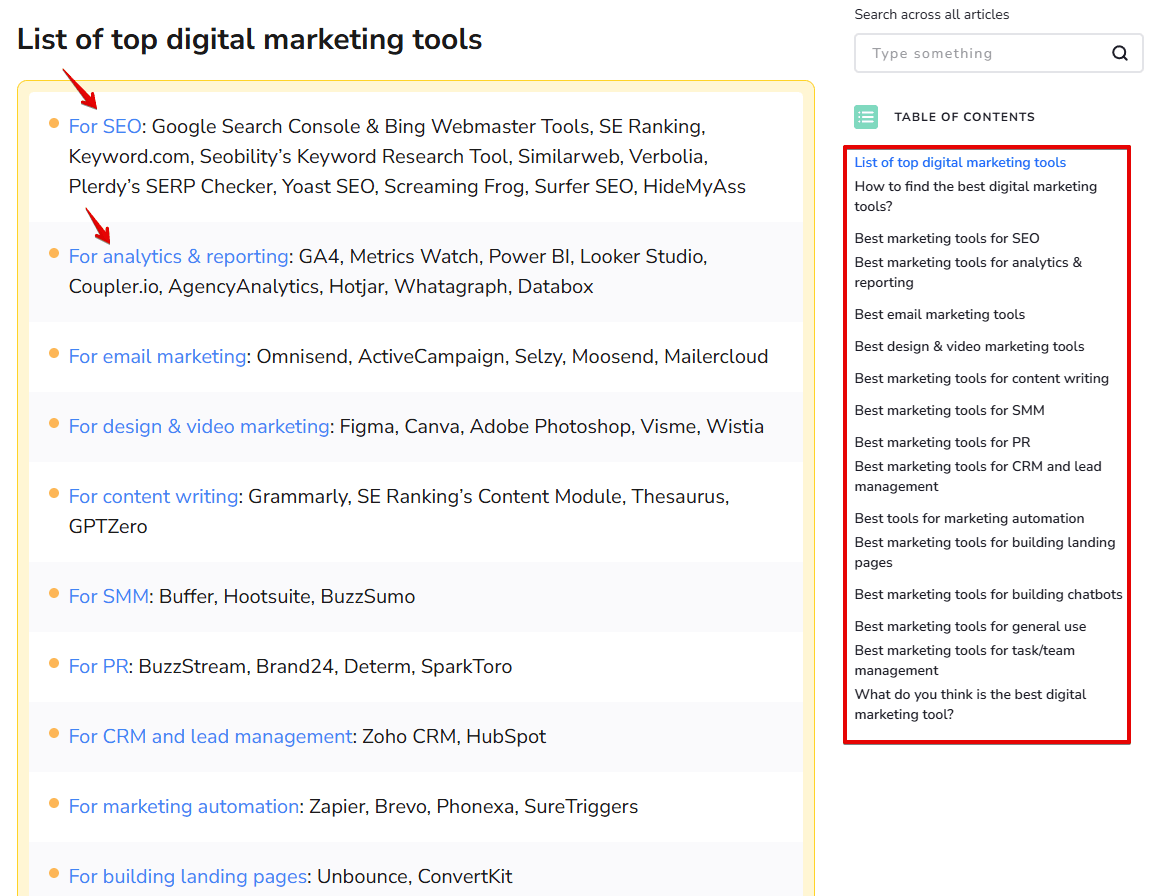
When you click on one of those anchor links—for example, the SEO category of the best tools—it takes you to that part of the blog.
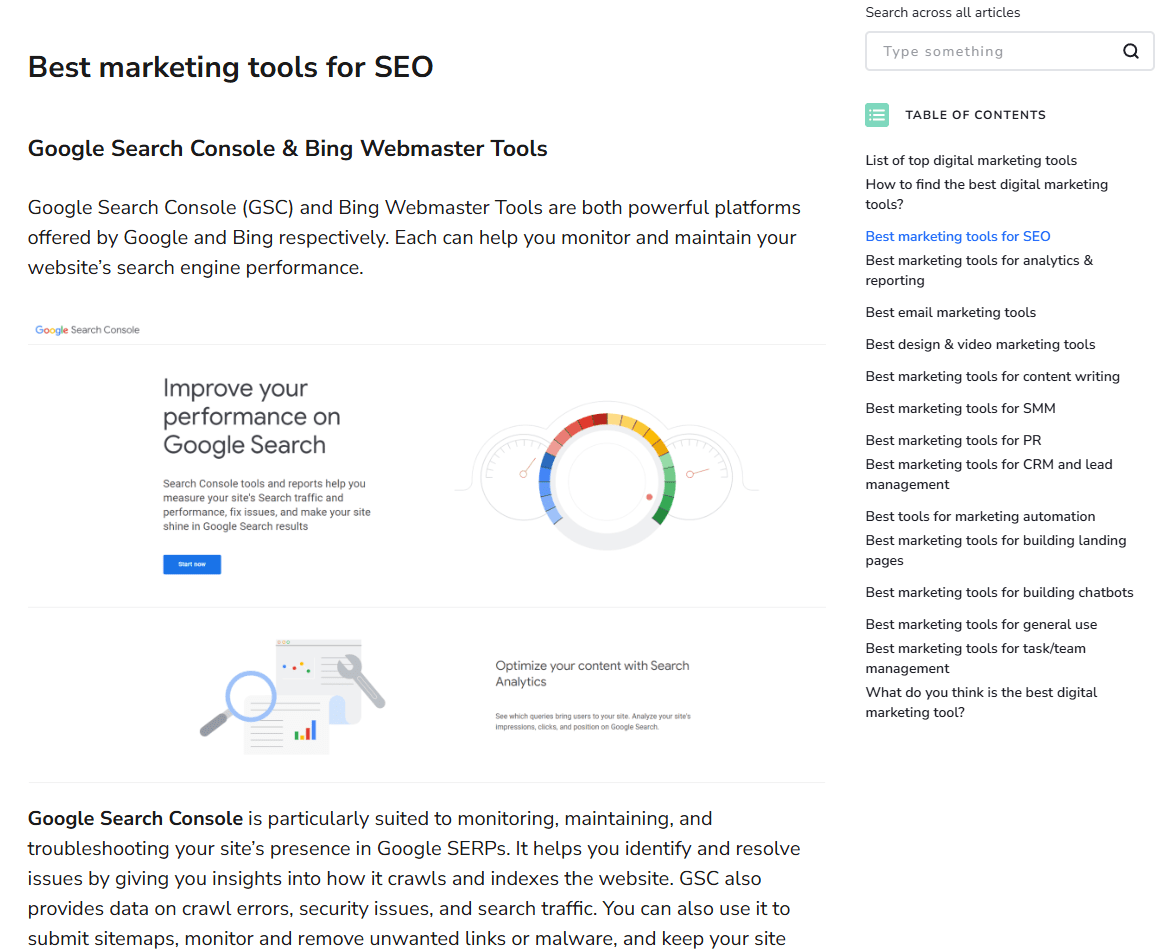
How you insert your anchor links depends on the CMS you’re using. Some CMS’s might natively include this feature, but others might require manual coding.
3. Divide a listicle by subtopic to cover more items
Did you notice that this article is a listicle? Did you also notice that we split it into three sections? We made a list of the benefits of listicles, beginner tips, and advanced tips. Dividing it into subtopics helped us cover the many different aspects of listicles in a reader-friendly way.
4. Use infographics
43% of marketers reported infographics to be the most effective content type. Infographics are eye-catching and do well on social media. Plus, everyone learns differently. While some users prefer to read/skim your listicle, others will benefit more from a graphic.
Let’s take an example from SE Ranking’s blog.
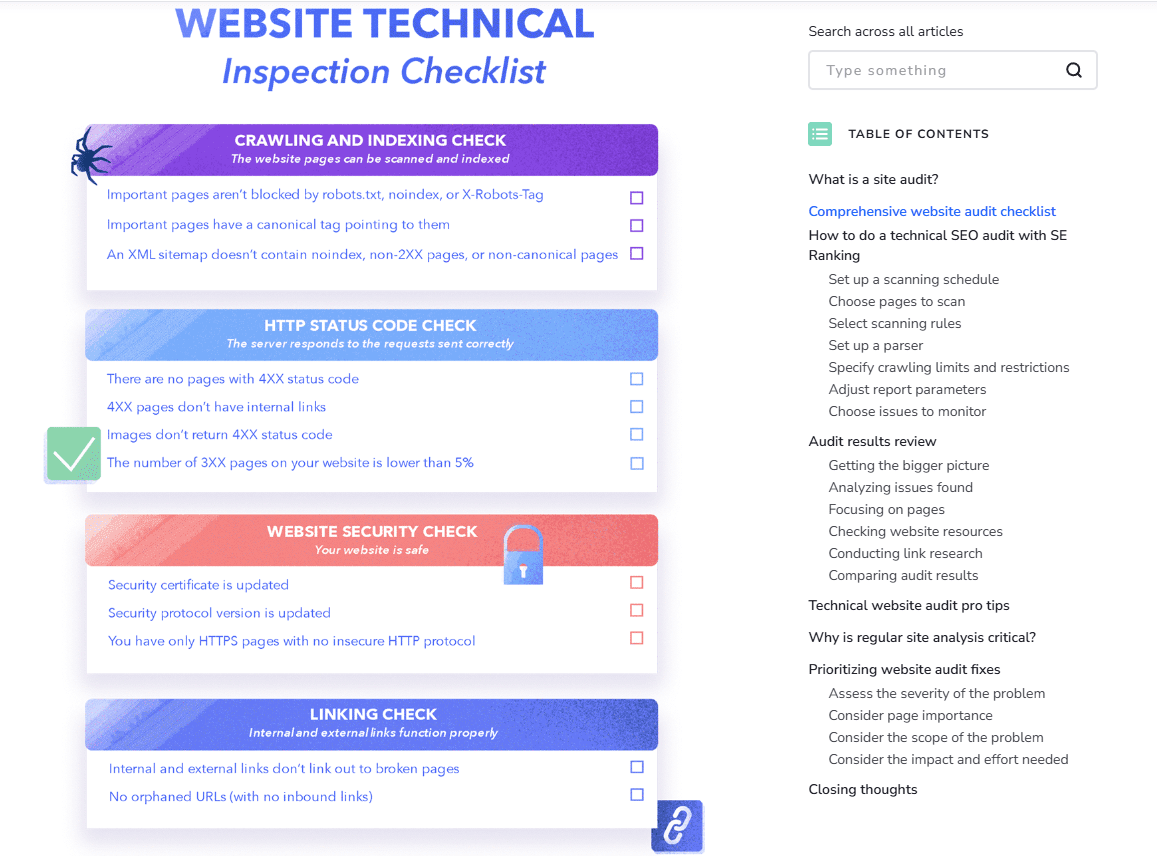
Sum up the highlights and “key findings” of your listicle in an infographic format. If you don’t have access to a professional graphic designer, try using a free tool like Canva, which comes with a vast selection of free-to-use templates.
Include the graphic somewhere in the listicle. Brands will often put it at the very beginning or end. You could even split it into several smaller infographics and intersperse them throughout your listicle.
Don’t forget that infographics are highly “sharable.” They make excellent material for your social media channels. If you have a portrait-oriented infographic, you can easily share it on Pinterest (a search engine!), likely without having to adjust the dimensions. For other social media channels (Instagram, Facebook, etc.) consider recreating the infographic to have the correct dimensions for each platform.
Pro tip: If you include your influencers in your infographic and then share the graphic on social media, tag them in the blog post.
Read our detailed guide to learn how to create engaging infographics and optimize them for search traffic.
5. Include the number in the title and header
As we mentioned earlier, numbers are especially click-worthy. The title of your listicle should include a number, along with your H2(s), but only when it makes sense.
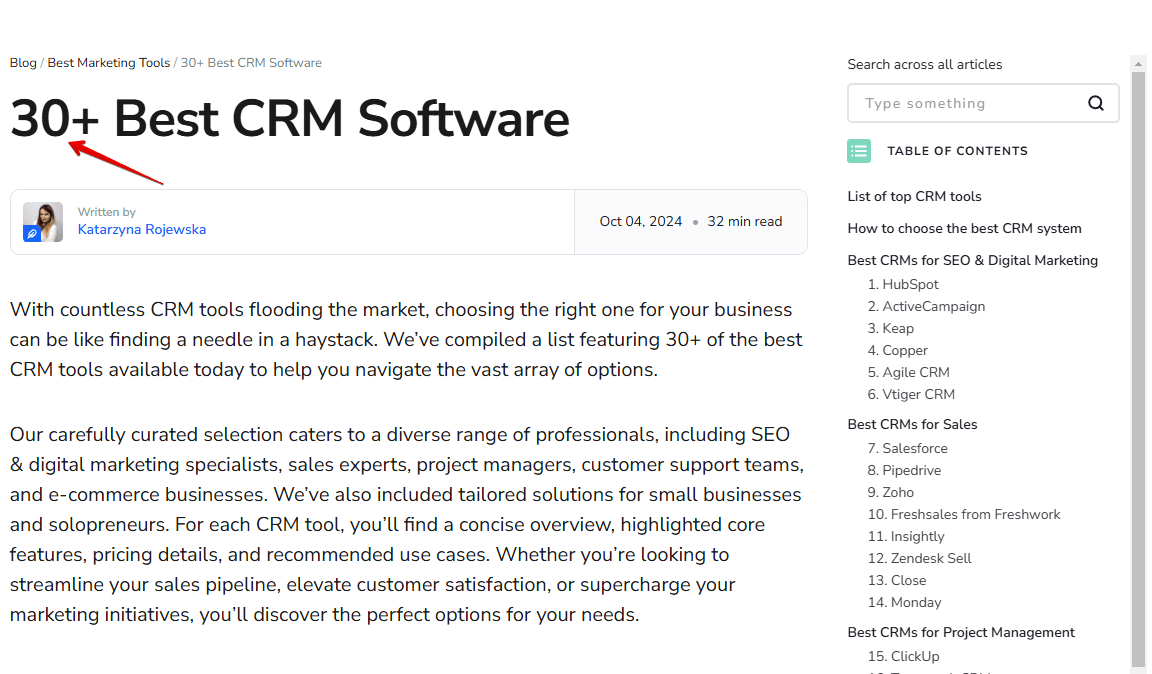
If you can push the number closer toward the front of the title — along with your keyword — that’s ideal. But never force it. First and foremost, it has to feel natural to the reader.
6. Mind the quality of your articles — always
We mentioned earlier that since listicles are so eye-catching, some brands use them to get reader attention while skimping out on content quality.
Always keep user intent in mind when creating content. Whatever the title of the listicle is, the body of the content should respond to that specific query. Avoid clickbait titles or anything else that could disappoint the reader after clicking to read your list post. Articles that fail to meet user intent won’t be ranked favorably because they disappoint both readers and Google.
The number of list items also matters. Some say that the longer the list is, the better. This is only true, however, if you maintain the post’s quality throughout.
Your list shouldn’t be too short either. Remember that one of the purposes of making a list is to curate the most important information for the reader. Instead of crafting a blog post with a list of three things, stick to five or more. Either way, prioritize creating a list packed with value.
Final notes
Listicles are easy to consume. They also collect the most relevant information for users and stand out in SERPs. When optimized well, they have even more value today now that AI search engines use this format and cite the sources used. But, not all content will make sense in a listicle form. Other types of articles, like how-tos, can perform very well. The bottom line is to make room for listicles in your content strategy while paying close attention to what your readers want and need from you.

